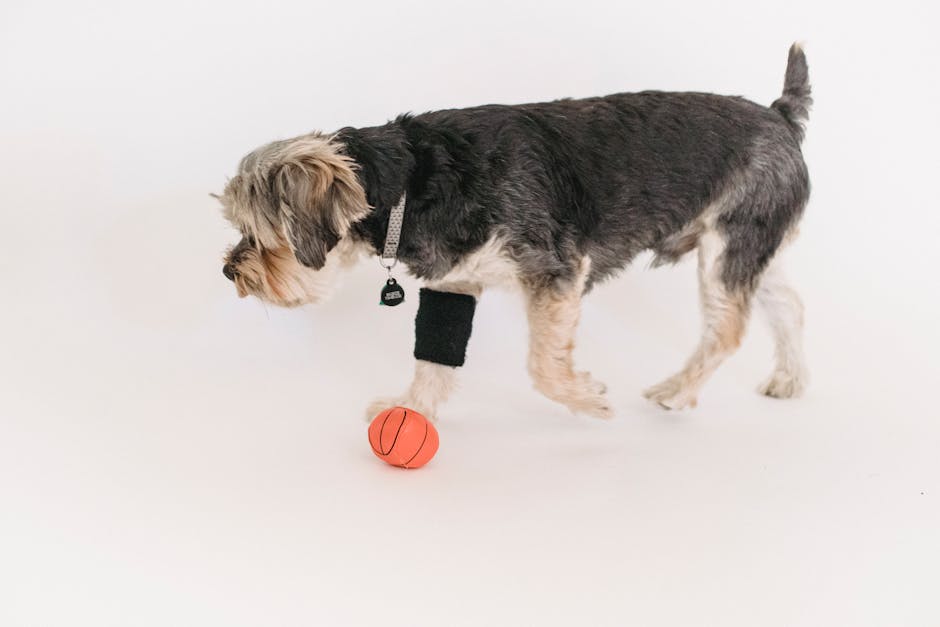Introduction to Puppy Training Programs
Puppy training programs are all about setting the stage for a healthy, happy relationship between you and your furry friend. It’s more than just teaching them where to pee; it’s about communication, understanding, and respect. Think of these programs as a crash course in speaking ‘dog’. You’ll learn how to get your pup to listen to you and how to listen to your pup in return. Most importantly, you’ll discover that patience and consistency are your best tools. Every puppy is different, and there’s no one-size-fits-all approach. Some might grasp the basics of “sit” and “down” in days, while others might take a little longer. And that’s okay. The goal here isn’t to rush the process but to establish a strong foundation for a lifetime of good habits. Whether you opt for online tutorials, group classes, or one-on-one sessions with a pro, remember, the journey is just as important as the destination.
Mistake #1: Inconsistent Training Methods
Puppies thrive on consistency. When you use different training methods or change the rules frequently, it confuses them. Imagine trying to learn a new game but the rules keep changing. Tough, right? That’s how your puppy feels. If one day you’re lenient about them sitting before meals and the next day you’re strict, they won’t understand what you want. Consistency is key. Stick to one training method and set of rules. Your puppy will learn faster and be happier for it. Remember, training is not just about commands, it’s about building a trusting relationship. And that starts with clear, consistent guidance.
Mistake #2: Neglecting Socialization
Skipping puppy socialization is a big mistake. This early stage is when your puppy learns about the world. Without meeting other dogs, people, and experiencing new environments, puppies may grow up fearful or aggressive. Start socializing your puppy from about 8 to 16 weeks of age. This is the golden window for shaping a friendly, confident dog. Introduce your puppy to different sounds, sights, and surfaces safely. Also, let them meet various people and friendly dogs in controlled settings. Skipping this can lead to a lifetime of behavior issues. Remember, it’s not just about making them social, it’s about preparing them for a happy, stress-free life.
Mistake #3: Using Negative Reinforcement
Negative reinforcement might seem like a quick fix when training a puppy, but it’s a road that leads to more harm than good. This approach involves taking away something unpleasant to reinforce the behavior you want. While it might work in the short term, it often creates a fearful and anxious dog, not a well-trained companion. Think of it this way: you want your puppy to trust and respect you, not fear you. Positive reinforcement, on the other hand, rewards good behavior with treats, praise, or playtime, making training a happy and enjoyable process for both of you. Always aim to build on love and trust rather than fear.
Mistake #4: Skipping Basic Commands
Skipping basic commands is a big no when training your puppy. Think of basic commands like “sit,” “stay,” “come,” and “down” as the building blocks of a well-behaved dog. Imagine trying to build a house without laying a strong foundation first. It just doesn’t work. Skipping these can lead to a dog that’s confused and hard to control, making life tougher for both of you. Start simple. Mastering these basic commands not only teaches your puppy how to listen but also sets the stage for learning more complex commands later. It’s all about clear communication. By skipping this step, you’re missing the chance to bond with your puppy and to understand each other better. Trust me, investing time in these basics pays off big time in the long run.
Mistake #5: Lack of Patience and Consistency
Lack of patience and consistency is a big no-no in puppy training. Think about it, training a pup is a lot like teaching a kid to read. You wouldn’t expect a child to master a book overnight, right? The same goes for your furry friend. Training takes time. You need to be patient. Your puppy won’t get everything right away, and that’s okay. They’re learning, just like we do. Now, consistency is the other half of the equation. Imagine you’re trying to get fit. If you hit the gym once in a blue moon, you’re not gonna see results. Training your puppy is the same deal. You’ve got to be consistent with commands, rules, and routines. Stick to them. Don’t let your puppy jump on the sofa today if you don’t want them doing it tomorrow. Inconsistency is confusing for them. Bottom line: patience and consistency are key. Stick with it, and you’ll see your pup grow into a well-behaved dog that knows the drill.
The Importance of Positive Reinforcement in Puppy Training
Positive reinforcement isn’t just good; it’s essential in puppy training. Think of it as the golden rule. Every time your puppy does something right, reward them. This could be a treat, a “good boy” or “good girl,” or a play session. It’s all about making the good stuff that comes from listening outweigh the bad. Forget about punishment. Negative reactions can confuse them and hurt your bond. Remember, puppies learn best when they’re happy and stress-free. So, keep training positive. This way, your puppy not only learns commands but also trusts and loves you more.
How to Correct These Mistakes Effectively
Correcting puppy training mistakes means being patient and consistent. Let’s break it down. First, if you’re not rewarding good behavior enough, start doing it more. Every time your puppy does something right, give them a treat, a pet, or some praise. This reinforces their good behavior. Second, if you’re using too much punishment, shift gears. Instead of scolding, redirect their attention to what they should be doing. Third, inconsistency confuses puppies. If you let them jump on you today but scold them for it tomorrow, they won’t understand. Set clear rules and stick to them. Fourth, not socializing your puppy enough can lead to fear and aggression. Gradually introduce them to new people, dogs, and situations. Lastly, ignoring their energy levels can lead to problems. If your puppy is bouncing off the walls, they need more exercise. A tired puppy is a good puppy. Remember, training takes time. Stick with it, and you’ll see progress.
Additional Tips for Successful Puppy Training
In training puppies, a little insight goes a long way. Keep training sessions short, about 5 to 10 minutes, to match a puppy’s attention span. Always end on a positive note, so your puppy feels good about the training. Use consistent commands and rewards. If “sit” earns a treat today, it should always earn a treat. The timing of rewards is crucial. Reward immediately after the desired behavior to reinforce it. Let’s not forget about socialization. Introduce your puppy to new experiences, places, and faces regularly. This builds confidence and helps prevent fearfulness. Lastly, remember patience is your best ally. Puppies learn at their own pace, and getting frustrated won’t speed up the process. Stick with these principles, and you’ll set the stage for a well-behaved adult dog.
Conclusion: The Path to a Well-Behaved Puppy
Training your puppy is key to building a strong bond and ensuring they grow up to be well-behaved. Avoid the top mistakes in puppy training: skipping socialization, inconsistent rules, punishment for mistakes, neglecting basic commands, and lack of patience. Remember, learning takes time. Be consistent, reward good behavior, and above all, keep training sessions fun and positive. Your efforts will pave the way for a happy, confident dog. In the journey of puppy training, patience and consistency are your best friends.


